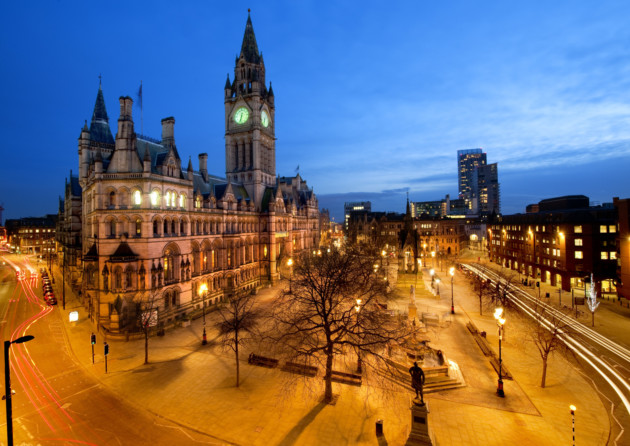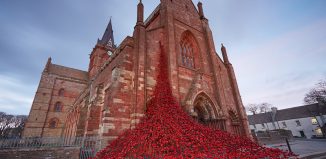Manchester city guide
Manchester prides itself as a city of firsts. From Rutherford splitting the atom in 1917 to Kilburn and Williams testing Baby, the world’s first stored-program computer, in 1948, Manchester has always led, not followed.
Some 25 (and counting) Nobel Prize winners have researched their breakthroughs in Manchester while scientists from the University of Manchester are among those currently working at the Large Hadron Collider at CERN near Geneva. But it was one key event that shaped Manchester flagship role as Britain’s first modern-industrial city: the Preston-born wigmaker Richard Arkwright kick-started Britain’s Industrial Revolution when he opened the first cotton mill in Manchester in 1780.
Fast forward to the present day and the city has evolved dramatically from industrial powerhouse to the cultural capital of the North. Urban regeneration became the byword after the 1996 IRA bombing of the city. The subsequent success of the Commonwealth Games in 2002 sealed the city’s renaissance. Today Manchester is all boutique hotels, cultural events and start-up industries with the glass-shard Beetham Tower a symbol of the new face of Manchester. MediaCityUK at Salford Quays is expanding fast around its nucleus of the BBC headquarters, Granada TV and Salford University. Manchester may have been built on textiles and heavy industry but Coronation Street-style terraces are a distant memory amid the modern-urban cityscape.
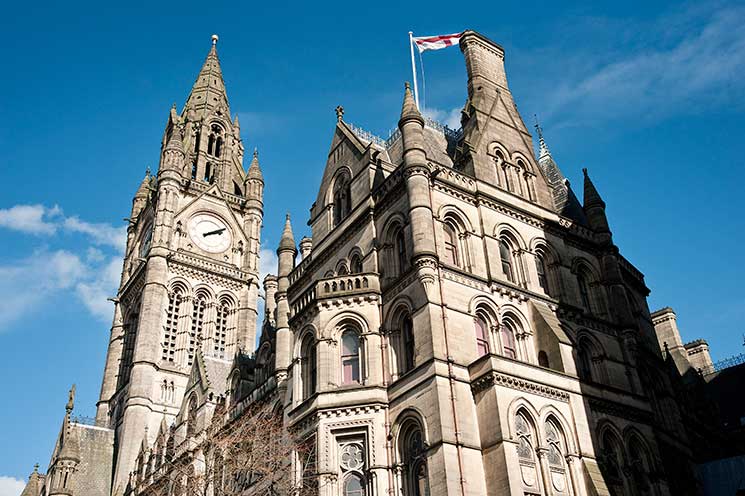
The place to start an exploration of Manchester is the place where Manchester started. Julius Agricola established the settlement of Mamucium in AD79 in what is today the Castlefield area of the city. It would have housed up to 2,000 people in its heyday but, today, just four fragments remain of the vicus. This is also the area where canals and railways, crucial to Manchester’s role as the crucible of the Industrial Revolution, transformed Manchester from a provincial market town.
The Museum of Science and Industry (MOSI) makes its home in the area today and presents a comprehensive introduction to the city’s evolution. Built on the site of the original Liverpool Road train station, the oldest surviving railway station in the world, MOSI also celebrates the spirit of innovation that appears indelibly printed into Manchester’s DNA. Standing in the Revolution Gallery, encircled by examples of Manchester firsts, the scale of achievements becomes truly apparent: a 1775 prototype water frame machine for manufacturing textiles, a replica of the Baby computer and a display about the opening of the Liverpool and Manchester Railway in 1830, the world’s first steam-powered railway and the first to carry both passengers and goods.
“London was heavily protected by the guides and livery companies but the towns of the North were less encumbered. As cotton took hold in Manchester, it generated a lot of wealth locally and started to act as a magnate for entrepreneurs seeing to make their fortune,” explains Adam Daber, MOSI’s Curator of Industry.
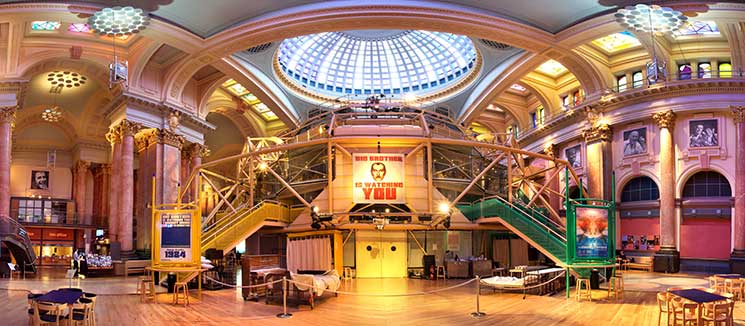
“Manchester was different in that, by attracting free thinkers to the region to make their mark, there was no limit to progress. I think that philosophy still holds true today,” he adds.
Richard Arkwright, some of whose machinery is on display in the Textiles Gallery, first patented the water frame textile machine near Matlock, Derbyshire, in 1769. He opened his first steam-powered factory in Manchester and, by 1800, Manchester had become known as Cottonopolis, the Industrial Revolution bringing a breathtaking pace of change to the city. By 1830, Manchester boasted 101 cotton mills, employing 28,000 people. City status followed in 1853 by which time the population was in excess of 300,000 people – today the population of Greater Manchester stands around 3m people. It was a time of dark, satanic mills, extreme wealth and poverty, and enormous innovation. Manchester would never be the same again.
Writing of the era in Hard Times (1854), Charles Dickens, a frequent visitor to Manchester, described, “… the piston of the steam engine worked monotonously up and down like the head of an elephant in a state of melancholy madness.”
While industrial heritage is the bedrock of modern Manchester, there are other dimensions to the city. Castlefield is also a good place to start a 90-minute walking tour of Manchester landmarks, one of a huge array of themed walking tours organised by Manchester Guided Tours.
“Manchester is a compact city. The beauty of it is the ability to walk through its history,” says Blue Badge guide Kate Dibble. “We’re not scared of putting a glass building next to a redbrick one so, as you walk, you feel the heritage of the city sitting cheek by jowl with the modern city.”
A typical tour leads back to the city centre, passing the site of the legendary Hacienda nightclub (the centre of the Manchester music scene, now a residential development) and onto the Petersfield district. This area is best known as the beating heart of radical Manchester. Friedrich Engels was a regular visitor to Manchester and his observations of slum-living conditions would later inspire his 1844 tome, Conditions of the Working Classes in England. A red plaque now commemorates the legacy of St Peter’s Fields, where in 1819 an impassioned public protest for parliamentary reform lead to the Peterloo Massacre. Sabre-wielding troops killed 11 and injured hundreds in a brutal put down of the workers’ protest.
The Radisson Blu Edwardian hotel on Peter Street now stands on the site of the erstwhile Free Trade Hall, which was built to commemorate the repeal of the Corn Laws in 1846, and later served as a major concert venue. It was here that Bob Dylan was branded “Judas” for playing electric guitar in 1966 and the Sex Pistols inspired the northern punk movement in 1976. Close by is Midland Hotel, where Messrs Rolls and Royce first met to talk car design in 1904.
Moving on towards Albert Square is Manchester’s Victorian Town Hall, a testament to its industrial past. On the way, look out for the imposing yet slightly incongruous statue of the American president Abraham Lincoln. The statue was given to the city in 1919 as a gesture of thanks to Manchester millworkers, who supported the president’s endeavours to abolish slavery. The elaborate Town Hall building, founded on the cotton business and opened in 1887, remains a symbol of the city’s industrious nature. The building has recently served as the location for such Hollywood blockbusters as Sherlock Holmes and The Iron Lady; it now offers clocktower tours for small groups as well as guided visits to the Sculpture Hall and Great Hall.
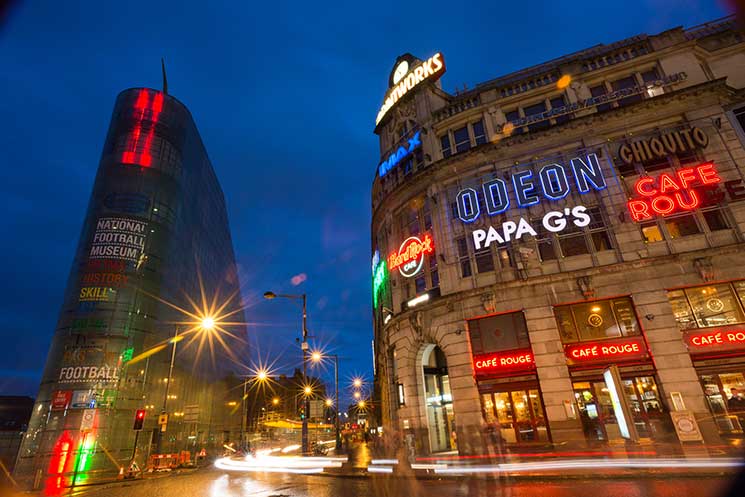
Finally, walk on past the Royal Exchange Theatre, the site of the city’s original cotton exchange and now a theatre in the round, towards Cathedral Gardens. Side-by-side examples of Manchester’s ancient and modern are Manchester Cathedral, a site of worship for over 1,000 years, and the all-glass Urbis building, built in the aftermath of the IRA bombing. It is now home to the National Football Museum.
The first wave of the Industrial Revolution changed Manchester irreversibly between 1780 and 1830. These traditional industries diminished dramatically after the Second World War but, in recent years, Manchester has capitalised on previous expertise to breakthrough into new and developing industries. Graphene, the thinnest material known and yet also one of the strongest, was discovered by scientists at the University of Manchester in 2004, while modern applications of the traditional textile trade extent to medical applications and nanotechnology.
The physical shape of the city is still changing with recent development around the Spinningfields new financial district and at Salford Quays, while the industry that powers the modern-industrial city is also still evolving. Yet the constant factor is Manchester’s ability to blaze the trail forward.
“I think Manchester will never loose that ability to lead in some areas, such as textiles, computing and energy,” says Adam Daber at MOSI. “Manchester has always been good at breaking barriers,” he adds. “That’s its big advantage.”
http://www.visitmanchester.com

